Dora Wings' 1/48 scale
Caudron C.632 Simoun
by Roland Sachsenhofer

If you take a look at aviation in the 1920s and 1930s, you soon come across a circumstance that must have been characteristic of this time: the constant struggle for more performance, prestige and, ultimately, sales figures materialised in a real enthusiasm for long-distance and racing competitions! The requirements of these competitions sometimes demanded true pioneering deeds. This was matched by the fact that the powerful aircraft developed during this period now seemed to have the potential to shrink global distances and make the world a smaller and smaller place. The way in which these developments took place must have seemed exciting and dramatic to contemporaries.
Distances that had previously taken weeks or even months to cross could suddenly be covered in a calculable number of hours or a few days. The aeroplane overcoming seas, deserts and mountains promised a revolution in travel with all its effects on society, the economy and the military. The possibilities of technical progress seemed just as limitless as the optimistic daring with which people attempted to achieve goals that had previously hardly been thought possible.
The wide variety of aircraft entered for these competitions and racing events can be significantly divided into two groups. On the one hand, specially designed aircraft were created whose entire profile was tailored solely to the racing event. These technically advanced designs include, for example, the Gee Bee R, the Supermarine S.6, or, with some reservations, the de Havilland DH.88 Comet. A second group includes all those aircraft that are based on unmodified or barely modified examples of series-produced sports, cruising or passenger aircraft. This group excelled above all in those competitions that called for the first-time flying of or the setting of new records on long-haul routes. The Caudron C.632 Simoun shown here is also worthy of inclusion in this group with some remarkable pioneering flights.
About the Caudron C.630 Simoun
In the early 1930s, the design was derived as an advanced cruising and sports aircraft from an existing racing aircraft design by Caudron's chief designer Marcel Riffard and was flown for the first time in October 1934. The performances flown with the prototype C.620 positioned the modern design in a class with the Bf 108- and thus in the top field of its time. Several variants of the new aircraft, christened Simoun (Arabic for hot desert storm), followed, but ultimately only the C.635 version with a 209hp 6Q-09 or 6Q-15 Bengali six-cylinder was to be built in larger numbers. The Caudron Simoun flew at over 300 km/h with this engine, a top speed that only the Bf 108 Taifun was capable of in its class. The maximum range was more than 1000 kilometres, which made the Simoun an ideal long-range aircraft without any modifications.
In fact, several long-haul flights were attempted with the type in the following years. For example, the flying writer Antoine de Saint-Exupéry made history when he attempted a new record for the Paris-Saigon route in his Caudron C.630 Simoun F-ANRY in 1935 - albeit in an unintentional way: he and his mechanic André Prévot were rescued and nursed back to health by Bedouins after days of being lost in the Egyptian desert. This existential experience found literary expression in the short story collection Wind Sand und Sterne. Another Caudron Simoun was also to play a role in a subsequent long-distance attempt by de Saint-Exupéry: in February 1938, the author had an accident when he and his trusted mechanic Prévot tried to take off from Guatemala City in a Simoun overloaded with fuel. Severely injured, de Saint-Exupéry and his companion again survived by a narrow margin.
About the model: Caudron C.632 Simoun F-ANXA
The C.632 Simoun shown here with the registration F-ANXA also had an exciting fate. The aircraft was used for record-breaking flights from France to Far East Asia. In the form shown here, equipped with the distinctive advertising inscriptions of Gody Radio, and piloted by Gaston Genin and Andre Robert, it succeeded in flying from Paris to Tananarive on Madagascar from 18 to 21 December 1935.
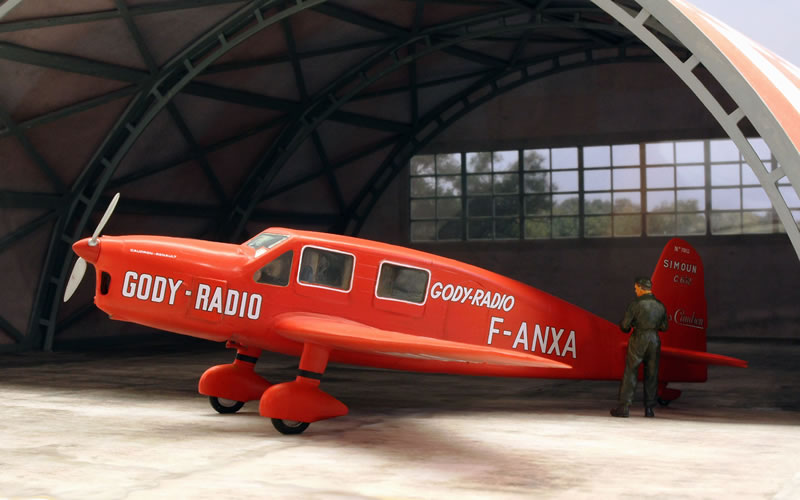
By the autumn of the following year, F-ANXA had been converted into a single-seater and then set off on another record-breaking flight in November 1936. However, this was not to have a happy ending. The aim was to set a new record time for the flight to Tokyo. The well-known pilot Andre Japy, legendary aviator and leading test pilot at Caudron, succeeded in setting a new record for the distance Paris-Hanoi (pure flight time: 50 hours and 59 minutes), but he failed twice in his attempt to reach Tokyo. In the first attempt, he had to return to Hong Kong because of bad weather, and the following second attempt turned out to be a complete disaster. Over Kyushu, Japy lost his bearings in a storm and finally had to attempt an emergency landing in the middle of the raging storm in the inhospitable Sefuri Mountains due to lack of fuel.
Over a hundred residents of the nearest village were involved in the search for the missing Japy. Eventually, the crash site was located in the inhospitable mountains and the seriously injured Japy was happily rescued and taken to the hospital in nearby Fukuoka, but his Simoun F-ANXA had been completely destroyed in the crash. Even today, a memorial stone can be found at the spot on Mount Sefuri where Andre Japy's flight came to a dramatic end.
The Caudron Simoun is one of those aircraft whose importance - and, to be honest, whose existence - I only learned about through a Dora-Wings kit. This sheds a telling light on the laudable kit philosophy of this manufacturer!

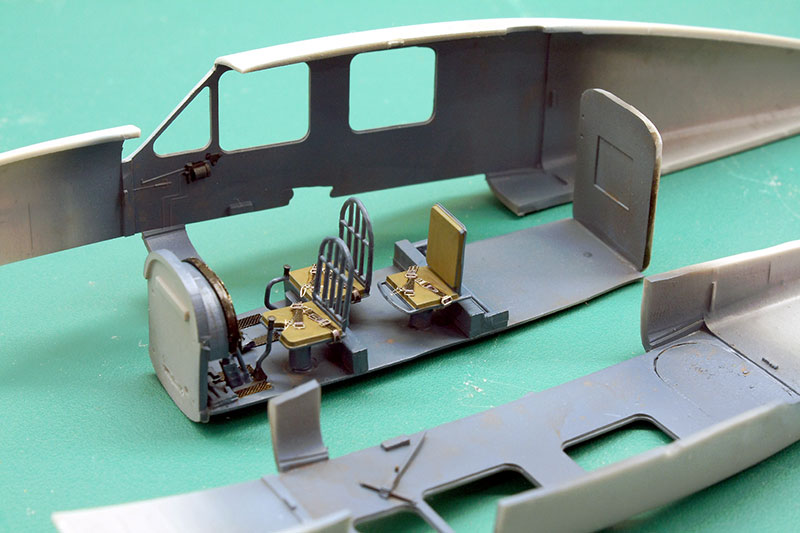
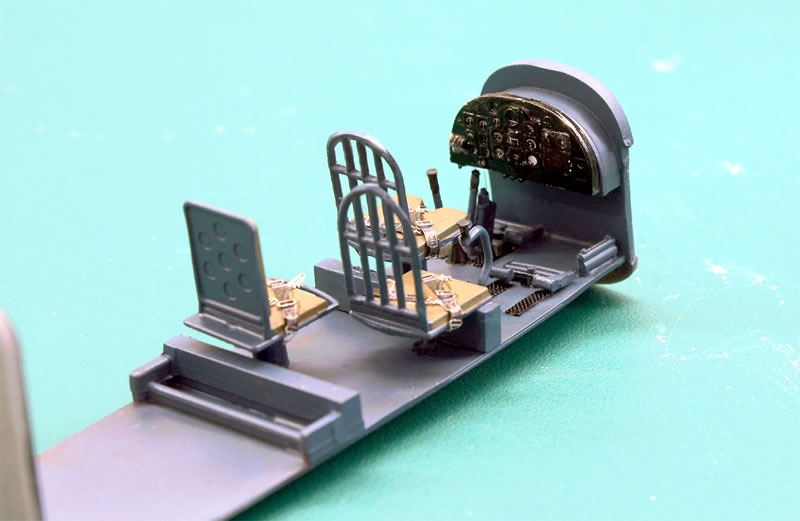
With Dora Wings one is used to lavish equipment and high quality - and also here one finds a well-equipped etched parts board, masking foils, an excellently worked decal sheet and -last but not least - kit parts that revel in well-realised details. The short run character, however, is noticeable in hefty material thicknesses, thick sprues and numerous fish skins as well as material overhangs that have to be trimmed.
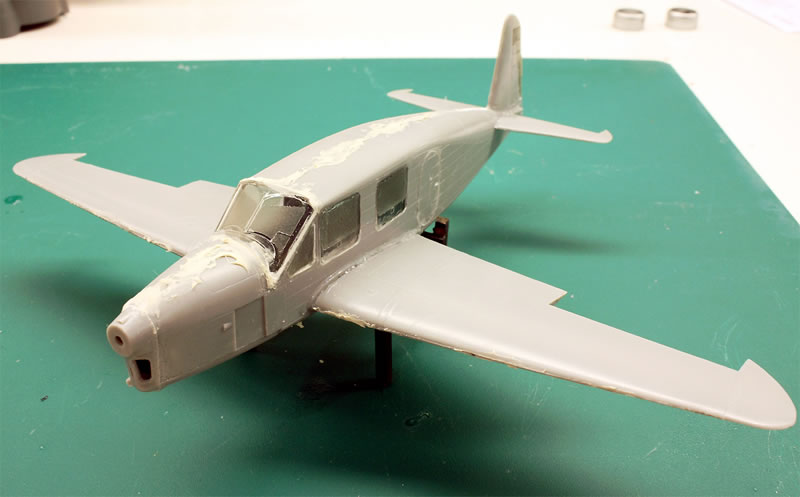
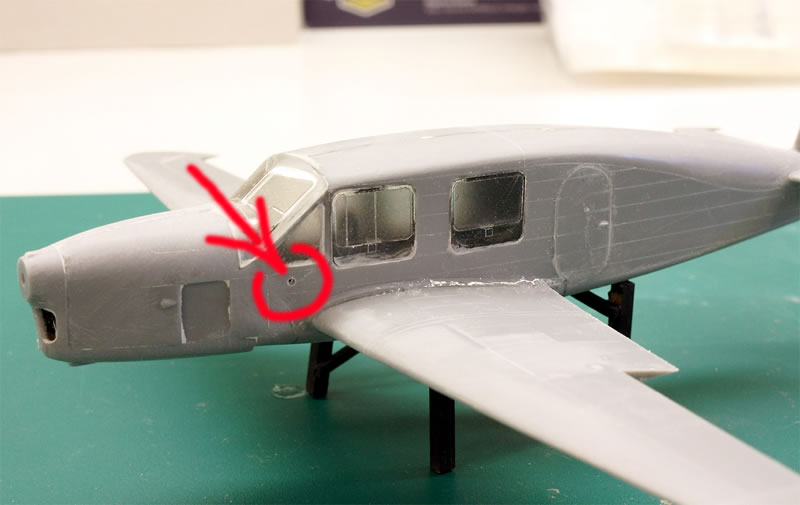

The accuracy of fit proved to be consistently good during construction. However, a certain amount of time and energy must be allowed for fitting tests, preparing the parts and planning individual construction steps, but the construction itself does not cause any problems - with one exception: the clear parts of the cabin windows sit completely flat in the fuselage half-shells, no protrusion facilitates gluing. I therefore fitted the clear parts into the openings and encapsulated them with KlearFix, hoping that the adhesive effect would be sufficient. It seemed to work. However, in the middle of the building process I accidentally pushed the front right cockpit window inwards. To get it back out, I had to drill a hole in the left side of the cockpit. A metal rod was to be pushed through this hole across the cockpit interior in order to push the loosened window back out into the frame. Fortunately this delicate operation went as planned - and fortunately again, this was the only unpleasant challenge of this otherwise very enjoyable kit!
If you would like to see the kit and the building process for yourself, you can find a detailed building report on "Scalemates" here:
MyAlbum (1:48) by Roland - Albums (scalemates.com)
As always, I am open to suggestions and questions:
ro.sachsenhofer@gmx.at
Model, Images and Text Copyright ©
2024 by Roland Sachsenhofer
Page Created 11 January, 2024
Last Updated
11 January, 2024
Back to HyperScale Main Page

|
Home
| What's New | Features | Gallery | Reviews | Reference | Resource Guides | Forum |